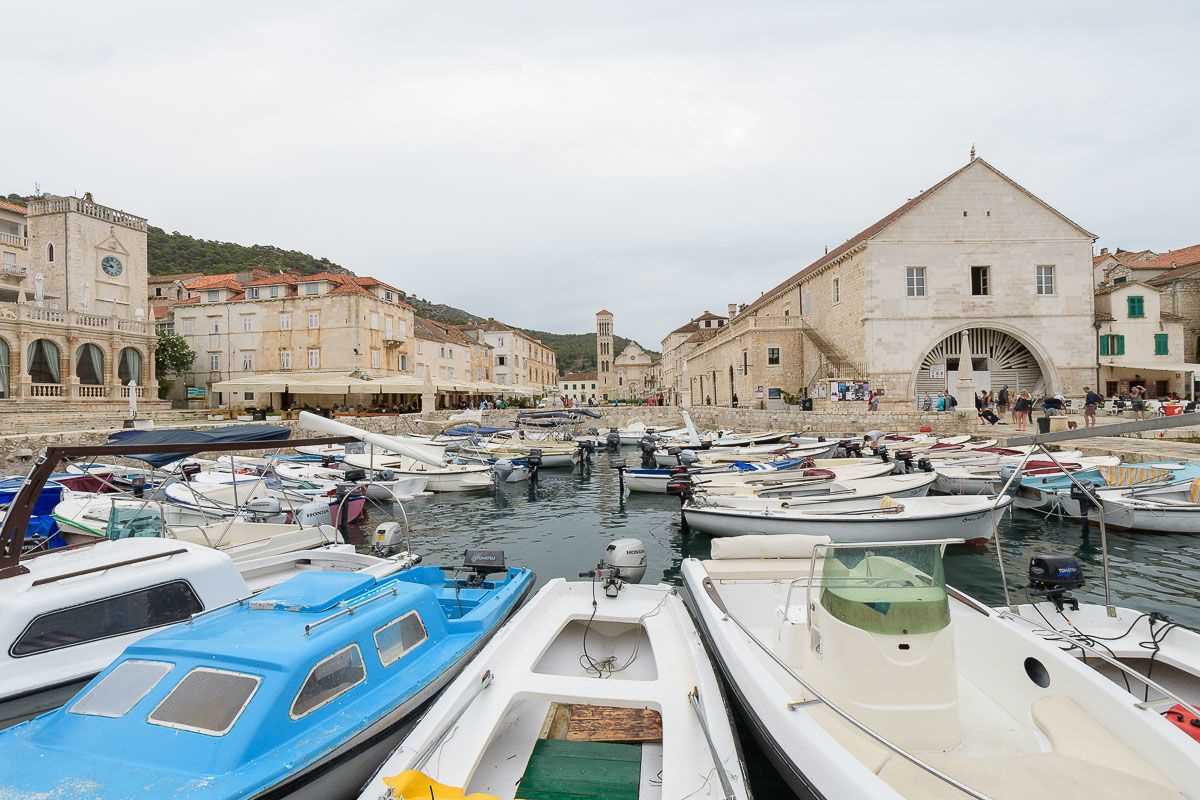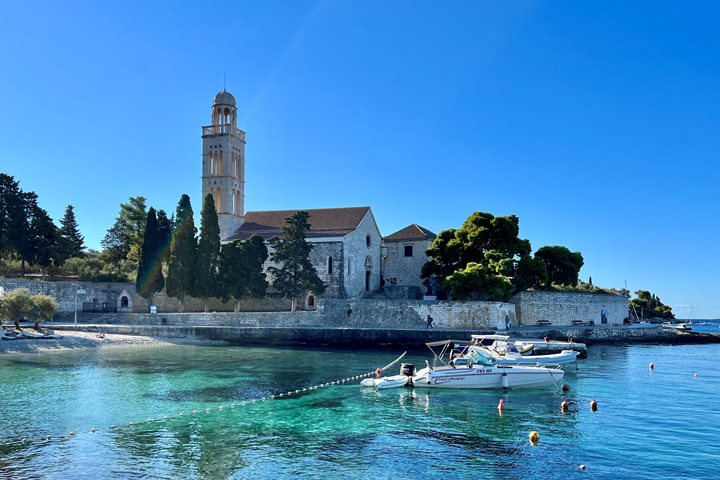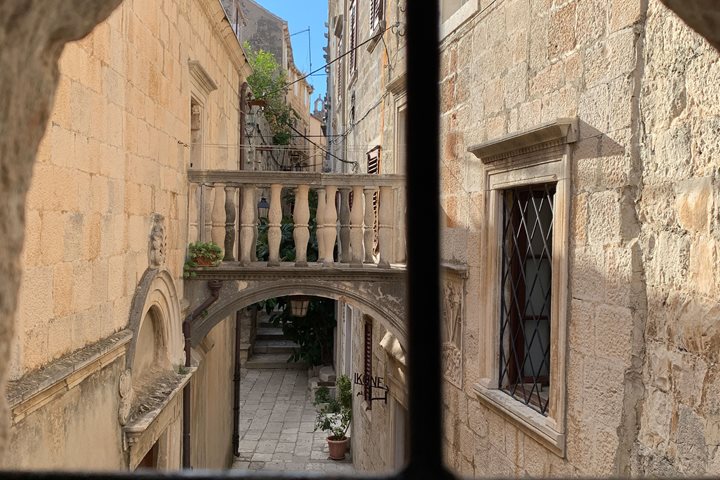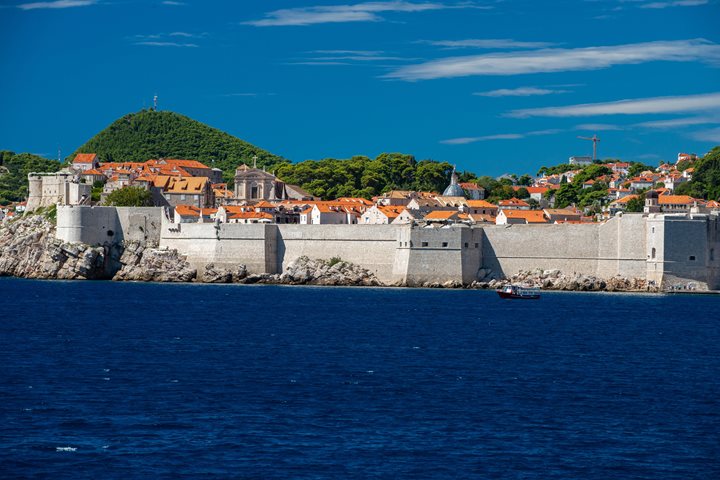Our day began as Sea Cloud approached the Croatian island of Hvar, an important Venetian outpost during the medieval era. This beautifully wooded island, prized throughout history for its shipbuilding timber, was a lovely morning stop on the final day of our voyage. Today the island is better known for rosemary, figs, and in particular lavender, the scent of which wafts delicately through the main square of town. We began with a guided walking tour of the picturesque town of Hvar, the name of which is derived from the Greek name Pharos. We spotted the winged lion of St. Mark—state propaganda of the Venetian Republic—throughout the town, which was under Venetian control for several hundred years. Our tour included the loggia, remains of the medieval pier, and the Franciscan monastery, with its splendid painting of the Last Supper and an oddly shaped, 500-year-old cypress tree (Cupressus sempervirens). We ended our tour at the Cathedral of St. Stephen before free time in town, which some spent shopping in the island’s many charming shops, while others enjoyed a walk through the wooded park adjacent to the old town. After returning to the ship and indulging in chef Maik’s famous parmesan pasta wheel, we had one final afternoon of sailing, accompanied by a lecture on the stranger-than-fiction Fourth Crusade, which was a major event that influenced life in the Balkans in the 13th century and beyond.
9/22/2022
Read
Sea Cloud
Hvar, Croatia
It’s hard to believe it is the last day of our magical cruise along the Dalmatian Coast. A visit to the beautiful island of Hvar, the “lavender capital” of Croatia, was the perfect way to end our voyage. Sea Cloud slipped through the narrow channel between the Pakleni Islands and dropped anchor just in front of the old Venetian harbor of the town of Hvar. We tendered into the pier for an early morning walking tour of this delightful town full of Venetian-inspired Renaissance palaces with pointed trefoil windows and ground-floor loggias. Cafes, bars, and lavender stands lined one side of the quay, while yachts and catamaran ferries from the Split jostled for position on the other. Our guides took us along the seawall and out to the Franciscan Monastery to see their little physic garden with its 500-year-old cypress tree and the impressive 16th century painting of the “Last Supper” that dominates the monk’s refectory. This magnificent work was done by a Venetian artist of the school of Paolo Veronese. The artist was shipwrecked on the island and nursed back to health in the monastery. We wound our way back to the main square, then climbed up through the narrow Porta Maestra that was once the main entrance to the fortified section of the town. We stopped in front of the small Benedictine convent, where five cloistered nuns still make lace from the fibers of the agave plant. After a visit to the basilica of St. Stephens on the main square, some of us fanned out on our own to explore the alleyways leading up to the Venetian fortress that protects the city, while others chose to buy a few lavender products or just sit and enjoy a cool drink in one of the many bars along the quay. All too soon, the tenders arrived to shuttle us back to the ship so we could partake in the famous “parmesan wheel” pasta feast on the Lido Deck. As we moved away from Hvar, the captain had the sailors go aloft for one last afternoon under sail.









